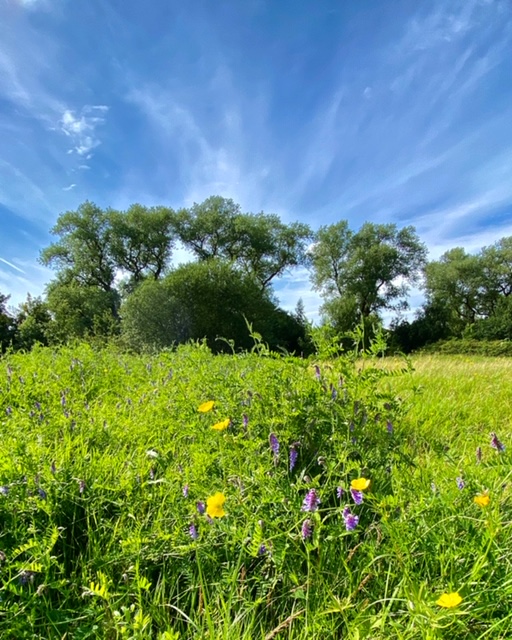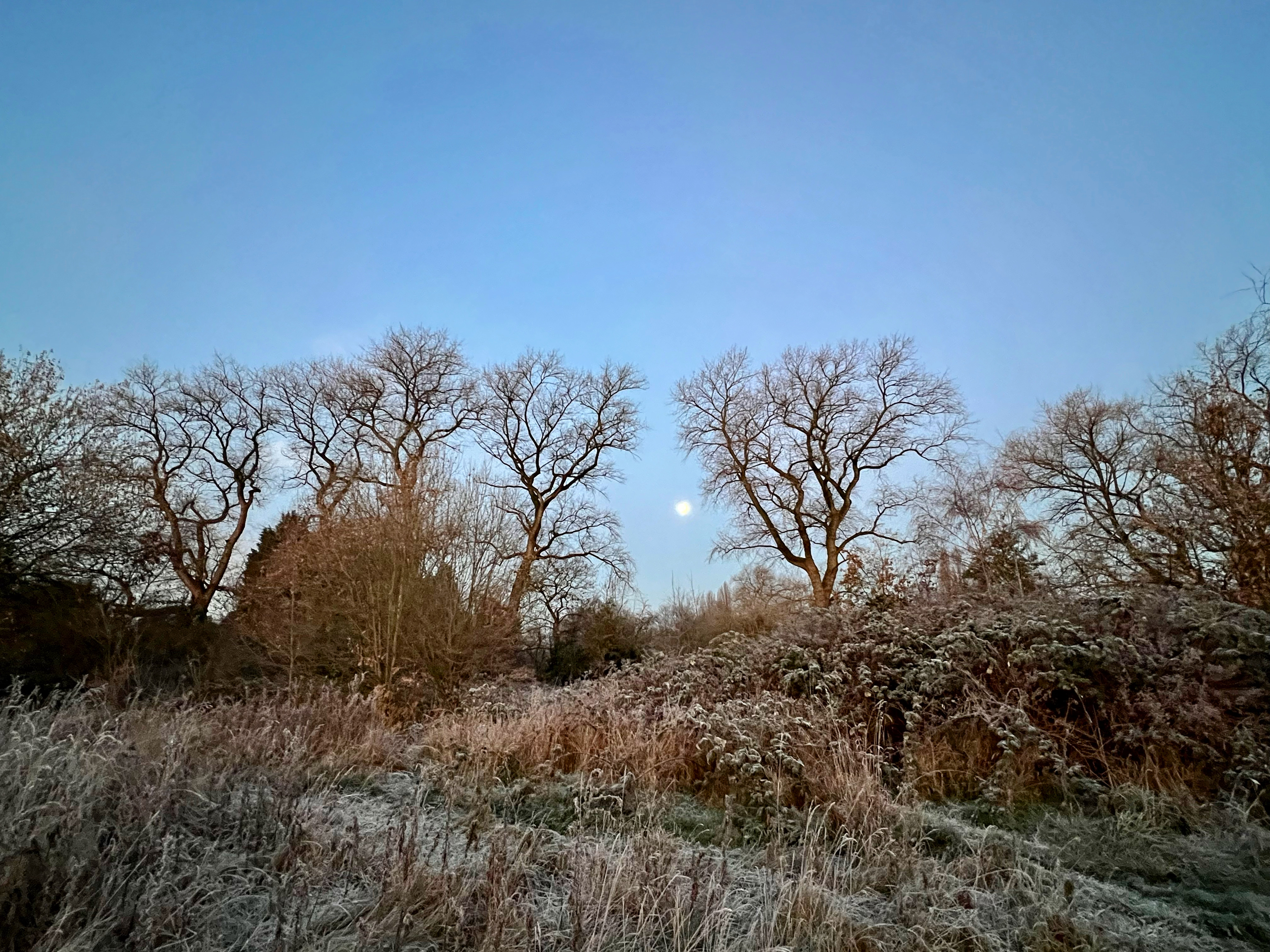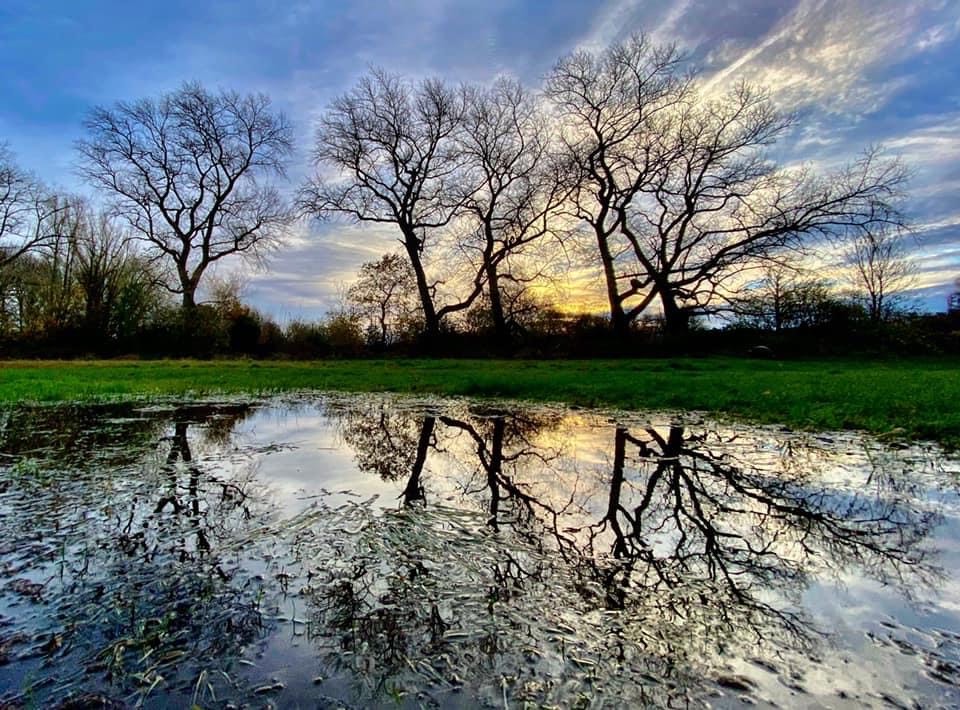Enriqueta’s trees
The eastern skyline of the Longford Park Conservation Area is dominated by a row of tall, impressive boundary trees which not only mark the perimeter of the Longford estate but also the line of the Parliamentary and local authority boundaries between Manchester and Trafford. There are 10 of these mature trees in total. They stand proud, overshadowing the surrounding foliage, reaching a grand height of approximately 100 feet. Their sturdy trunks are about 4 feet in diameter and, from historical maps of the estate, these trees can be dated to between 1885 and 1892, making them around 130 years old.


They were planted during the period when pioneering cotton manufacturer and philanthropist, John Rylands (1801-1888), was married to his third wife, Enriqueta. As her husband’s health began to fail, Enriqueta Rylands took on a more prominent role in the management of the estate. She is best known for founding the John Rylands Library, as a memorial to her husband after his death, but could she also be responsible for planting our magnificent boundary trees?
The Rylands were keen horticulturists and propagated their own cuttings and seeds. The formal gardens extended over 4 acres, housing a total of 31 conservatories which produced exotic fruits such as peaches and figs. Together they took an obvious pride in the Longford parkland so it’s entirely probable that the boundary trees were planted on Enriqueta’s instructions if not by her hand.
The trees are a black poplar hybrid. Some black poplars are among the UK’s rarest trees but are extremely difficult to identify by field study alone. In October 2020 together with the Friends of Longford Park we launched an appeal to have the trees DNA tested by the Forestry Commission. Exceeding all our expectations we raised a massive £720 within four days which enabled us to test all 10 trees. We even had to turn down donations such was the interest. It has been proven, by the overwhelming interest and generous donations from local people, that these trees are well known and well loved and are already of great local importance and conservation interest.
The DNA tests have determined that trees are a hybrid of the native Black Poplar and the Eastern Cottonwood. The tests also show that the trees are all of the same female clone. This provides further evidence that they were indeed planted by Enriqueta Rylands. An older, more mature tree in the centre of the park was tested at the same time. This tree is also of the same female clone which points to the fact that the older “mother” tree was used to provide these cuttings.
Female clones were often shunned as they produce white catkins which form a fluffy material around the seeds which helps to distribute them far and wide. This white fluff can resemble snow on a summer’s day and was regarded a nuisance by landscapers and gardeners. Enriqueta’s contributions were and are often overlooked – could she have planted female trees to make a point?
She was certainly a remarkable woman. When John Rylands was in ill-health Enriqueta took on some of his business affairs. She had no patience with orthodox methods of procedure whether by committee, council or board and, unafraid of being a woman in a man’s world, created a life-sized photo of her husband to display in his firm’s boardroom both making her presence felt and showing she had his full confidence and support. After his death she inherited his businesses and shares, carried on and expanded their good works, devoted much of her considerable wealth to education and religious missions and became the first woman to be honoured with the Freedom of the City of Manchester.
The John Rylands Library is seen as her greatest achievement. This world famous building is a striking example of neo-Gothic architecture and houses many special collections of books. It’s also renowned as one of the first buildings in Manchester to generate and be lit by electricity. Enriqueta was known to be forward thinking, ahead of her time. Black Poplars were planted to combat pollution and were heralded as the climate solution of the times, so the boundary trees could also be her very fitting contribution.
Enriqueta’s trees are currently under threat due to Manchester Metropolitan University’s development proposals for neighbouring Ryebank Fields. Longford Park is a Conservation Area which should give the trees some protection, however, despite ongoing discussions there is no defined boundary between the park and the adjacent land and no agreement as to which side of the boundary the trees stand. If it is proven that the trees are on park land, they are still at considerable risk as their root structures spread into Ryebank Fields and their canopies overhang. This makes them particularly vulnerable as Ryebank Fields was formerly an unregistered landfill site; the land is severely contaminated and extensive excavations will be required during remediation. This could cause the trees serious harm. Even where planning conditions exist, trees are often lost as ‘collateral damage’ during development.
Our trees have a very special history, they are well-known and well-loved and are integral to the character of Longford Park. We must ensure they are saved as a testament to Enriqueta Rylands and her legacy by the Friends of Longford Park and the Friends of Ryebank Fields.
By Julie Ryan

References:
Farnie, Douglas A., ‘Enriqueta Augustina Rylands, (1843-1908), Founder of the John Rylands Library’, *Bulletin of John Rylands University Library Manchester*, 71.2 (1989), 3–38
Journal of Horticulture and Cottage Gardener, *vol 47 *28 January 1862, p353-354 and 18 February 1862, p417-418
Gardeners Chronicle, 16 August 1875 p195-196 and 21 August 1875 p226-227
Photographs of Enriqueta’s trees by Jay Clarke.